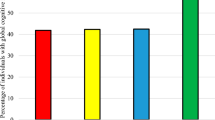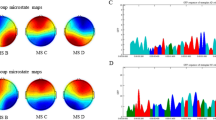Abstract
There is a limited correlation between white matter (WM) lesion load as determined by magnetic resonance imaging and disability in multiple sclerosis (MS). The reasons for this so-called clinico-radiological paradox are diverse and may, at least partly, relate to the fact that not just the overall lesion burden, but also the exact anatomical location of lesions predict the severity and type of disability. We aimed at studying the relationship between lesion distribution and disability using a voxel-based lesion probability mapping approach in a very large dataset of MS patients. T2-weighted lesion masks of 2348 relapsing-remitting MS patients were spatially normalized to standard stereotaxic space by non-linear registration. Relations between supratentorial WM lesion locations and disability measures were assessed using a non-parametric ANCOVA (Expanded Disability Status Scale [EDSS]; Multiple Sclerosis Functional Composite, and subscores; Modified Fatigue Impact Scale) or multinomial ordinal logistic regression (EDSS functional subscores). Data from 1907 (81%) patients were included in the analysis because of successful registration. The lesion mapping showed similar areas to be associated with the different disability scales: periventricular regions in temporal, frontal, and limbic lobes were predictive, mainly affecting the posterior thalamic radiation, the anterior, posterior, and superior parts of the corona radiata. In summary, significant associations between lesion location and clinical scores were found in periventricular areas. Such lesion clusters appear to be associated with impairment of different physical and cognitive abilities, probably because they affect commissural and long projection fibers, which are relevant WM pathways supporting many different brain functions.


Similar content being viewed by others
References
Andersson J, Jenkinson M, Smith S (2007) Non-linear registration aka s spatial normalisation. FMRIB Technical Report TR07JA2. FMRIB Anal Group Univ Oxford 2:1–21.
Barkhof F (2002) The clinico-radiological paradox in multiple sclerosis revisited. Curr Opin Neurol 15:239–245
Bates E, Wilson SM, Saygin AP et al (2003) Voxel-based lesion–symptom mapping. Nat Neurosci 6:448–450. https://doi.org/10.1038/nn1050
Benedict RHB, Holtzer R, Motl RW et al (2011) Upper and lower extremity motor function and cognitive impairment in multiple sclerosis. J Int Neuropsychol Soc 17:643–653. https://doi.org/10.1017/S1355617711000403
Benjamini Y, Hochberg Y (1995) Controlling the false discovery rate: a practical and powerful approach to multiple controlling the false discovery rate: a practical and powerful approach to multiple testing. J R Stat Soc B 57:289–300
Bressler SL, Tognoli E (2006) Operational principles of neurocognitive networks. Int J Psychophysiol 60:139–148. https://doi.org/10.1016/j.ijpsycho.2005.12.008
Calabrese M, Favaretto A, Martini V, Gallo P (2013) Grey matter lesions in MS: from histology to clinical implications. Prion 7:20–27. https://doi.org/10.4161/pri.22580
Calabresi PA, Radue E-W, Goodin D et al (2014) Safety and efficacy of fingolimod in patients with relapsing-remitting multiple sclerosis (FREEDOMS II): a double-blind, randomised, placebo-controlled, phase 3 trial. Lancet Neurol 13:545–556. https://doi.org/10.1016/S1474-4422(14)70049-3
Charil A, Zijdenbos AP, Taylor J et al (2003) Statistical mapping analysis of lesion location and neurological disability in multiple sclerosis: application to 452 patient data sets. Neuroimage 19:532–544. https://doi.org/10.1016/S1053-8119(03)00117-4
Fischer JS, Rudick RA, Cutter GR, Reingold SC (1999) The multiple sclerosis functional composite measure (MSFC): an integrated approach to MS clinical outcome assessment. Mult Scler J 5:244–250. https://doi.org/10.1177/135245859900500409
Fisk JD, Ritvo PG, Ross L et al (1994) Measuring the functional impact of fatigue: initial validation of the fatigue impact scale. Clin Infect Dis 18:79–83
Ge T, Müller-Lenke N, Bendfeldt K et al (2014) Analysis of multiple sclerosis lesions via spatially varying coefficients. Ann Appl Stat 8:1095–1118. https://doi.org/10.1214/14-AOAS718
Jenkinson M, Smith S (2001) A global optimisation method for robust affine registration of brain images. Med Image Anal 5:143–156. https://doi.org/10.1016/S1361-8415(01)00036-6
Jenkinson M, Bannister P, Brady M, Smith S (2002) Improved optimization for the robust and accurate linear registration and motion correction of brain images. Neuroimage 17:825–841. https://doi.org/10.1006/nimg.2002.1132
Kappos L, Radue E-W, O’Connor P et al (2010) A Placebo-controlled trial of oral fingolimod in relapsing multiple sclerosis. N Engl J Med 362:387–401. https://doi.org/10.1056/NEJMoa0909494
Kincses ZT, Ropele S, Jenkinson M et al (2011) Lesion probability mapping to explain clinical deficits and cognitive performance in multiple sclerosis. Mult Scler 17:681–689. https://doi.org/10.1177/1352458510391342
Klein A, Andersson J, Ardekani BA et al (2009) Evaluation of 14 nonlinear deformation algorithms applied to human brain MRI registration. Neuroimage 46:786–802. https://doi.org/10.1016/j.neuroimage.2008.12.037
Kurtzke JF (1983) Rating neurologic impairment in multiple sclerosis: an expanded disability status scale (EDSS). Neurology 33:1444–1453. https://doi.org/10.1212/WNL.33.11.1444
Magon S, Gaetano L, Chakravarty MM et al (2014) White matter lesion filling improves the accuracy of cortical thickness measurements in multiple sclerosis patients: a longitudinal study. BMC Neurosci 15:106-116. https://doi.org/10.1186/1471-2202-15-106
Mazziotta J, Toga A, Evans A et al (2001) A probabilistic atlas and reference system for the human brain: international consortium for brain mapping (ICBM). Philos Trans R Soc Lond B 356:1293–1322. https://doi.org/10.1098/rstb.2001.0915
Mollison D, Sellar R, Bastin M et al (2017) The clinico-radiological paradox of cognitive function and MRI burden of white matter lesions in people with multiple sclerosis: a systematic review and meta-analysis. PLoS ONE 12:e0177727. https://doi.org/10.1371/journal.pone.0177727
Mori S, Crain BJ (2005) MRI atlas of human white matter. Elsevier, Amsterdam
Polman CH, Reingold SC, Edan G et al (2005) Diagnostic criteria for multiple sclerosis: 2005 revisions to the “McDonald Criteria”. Ann Neurol 58:840–846. https://doi.org/10.1002/ana.20703
Rossi F, Giorgio A, Battaglini M et al (2012) Relevance of brain lesion location to cognition in relapsing multiple sclerosis. PLoS ONE 7:e44826. https://doi.org/10.1371/journal.pone.0044826
Rovira A, Auger C, Alonso J (2013) Magnetic resonance monitoring of lesion evolution in multiple sclerosis. Ther Adv Neurol Disord 6:298–310. https://doi.org/10.1177/1756285613484079
Sdika M, Pelletier D (2009) Nonrigid registration of multiple sclerosis brain images using lesion inpainting for morphometry or lesion mapping. Hum Brain Mapp 30:1060–1067. https://doi.org/10.1002/hbm.20566
Sepulcre J, Masdeu JC, Sastre-Garriga J et al (2008) Mapping the brain pathways of declarative verbal memory: evidence from white matter lesions in the living human brain. Neuroimage 42:1237–1243. https://doi.org/10.1016/j.neuroimage.2008.05.038
Sepulcre J, Masdeu JC, Pastor MA et al (2009) Brain pathways of verbal working memory. Neuroimage 47:773–778. https://doi.org/10.1016/j.neuroimage.2009.04.054
Sullivan GM, Feinn R (2012) Using effect size-or why the P value is not enough. J Grad Med Educ 4:279–282. https://doi.org/10.4300/JGME-D-12-00156.1
Tomassini V, Johansen-Berg H, Jbabdi S et al (2012) Relating brain damage to brain plasticity in patients with multiple sclerosis. Neurorehabil Neural Repair 26:581–593. https://doi.org/10.1177/1545968311433208
Tombaugh T (2006) A comprehensive review of the paced auditory serial addition test (PASAT). Arch Clin Neuropsychol 21:53–76. https://doi.org/10.1016/j.acn.2005.07.006
Vellinga MM, Geurts JJG, Rostrup E et al (2009) Clinical correlations of brain lesion distribution in multiple sclerosis. J Magn Reson Imaging 29:768–773. https://doi.org/10.1002/jmri.21679
Author information
Authors and Affiliations
Corresponding author
Ethics declarations
Conflict of interest
Anna Altermatt: No conflicts of interest. Laura Gaetano: Temporary employee of Novartis Pharma AG. Stefano Magon: received research support from Swiss MS Society, Swiss National Science Foundation, University of Basel and Stiftung zur Förderung der gastroenterologischen und allgemeinen klinischen Forschung sowie der medizinischen Bildauswertung des Universitätsspitals Basel. Dieter Haering, Davorka Tomic: Full-time employee of Novartis Pharma AG. Jens Wuerfel: is CEO of MIAC AG. He served on advisory boards for Actelion, Biogen, Genzyme, Novartis and Roche. He received research grants from Novartis, and speaker honoraria from Bayer, Biogen, Genzyme, Novartis, Teva and Biogen. JW was supported by the DFG, the EU, the German ministry of education and research (BMBF/KKNMS) and the German ministry of economy (BMWi). Ernst-Wilhelm Radue: has received research support from Biogen Idec, Merck-Serono, Novartis and Actelion. Ludwig Kappos: Author’s institution (University Hospital Basel) has received in last 3 years and used exclusively for research support: steering committee, advisory board, and consultancy fees (Actelion, Addex, Bayer HealthCare, Biogen Idec, Biotica, Genzyme, Lilly, Merck,Mitsubishi, Novartis, Ono Pharma, Pfizer, Receptos, Sanofi, Santhera, Siemens, Teva, UCB, XenoPort); speaker fees (Bayer HealthCare, Biogen Idec, Merck, Novartis, Sanofi, Teva); support of educational activities (Bayer HealthCare, Biogen, CSL Behring, Genzyme, Merck, Novartis, Sanofi, Teva); royalties (Neurostatus Systems GmbH); grants (Bayer HealthCare, Biogen Idec, European Union, Merck, Novartis, Roche Research Foundation, Swiss MS Society, Swiss National Research Foundation). Till Sprenger: has received no personal compensation. His previous and current institutions have received payments for research, for consulting and speaking activities from: Actelion, ATI, Biogen Idec, Electrocore, Sanofi Genzyme, Mitsubishi Pharma, Teva, Novartis; grants received (EFIC-Grünenthal, Novartis Pharmaceuticals Switzerland, Swiss MS Society, Swiss National Research Foundation).
Additional information
Handling Editor: Christoph M. Michel.
Rights and permissions
About this article
Cite this article
Altermatt, A., Gaetano, L., Magon, S. et al. Clinical Correlations of Brain Lesion Location in Multiple Sclerosis: Voxel-Based Analysis of a Large Clinical Trial Dataset. Brain Topogr 31, 886–894 (2018). https://doi.org/10.1007/s10548-018-0652-9
Received:
Accepted:
Published:
Issue Date:
DOI: https://doi.org/10.1007/s10548-018-0652-9




